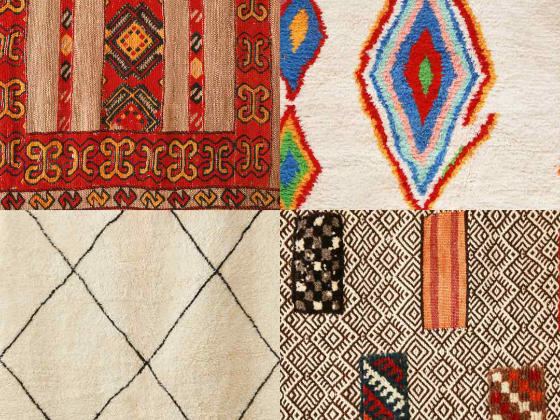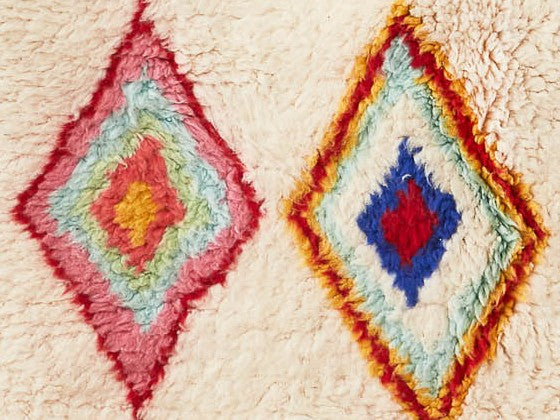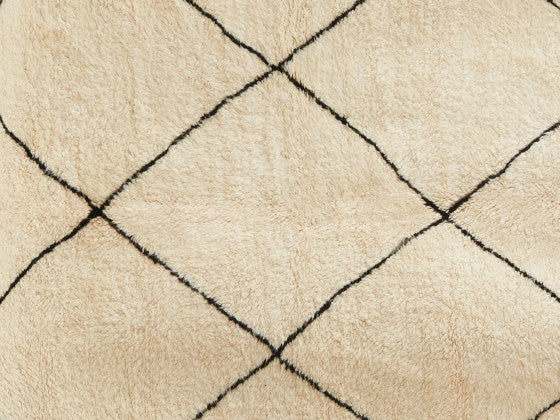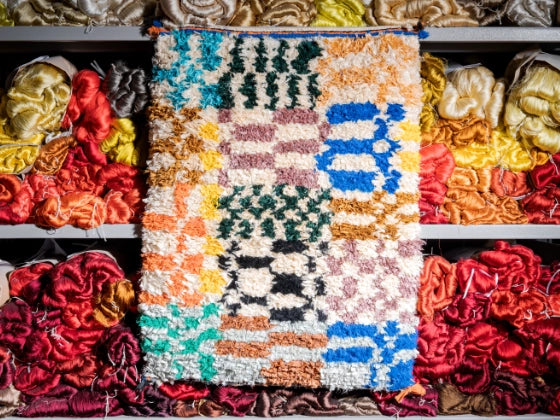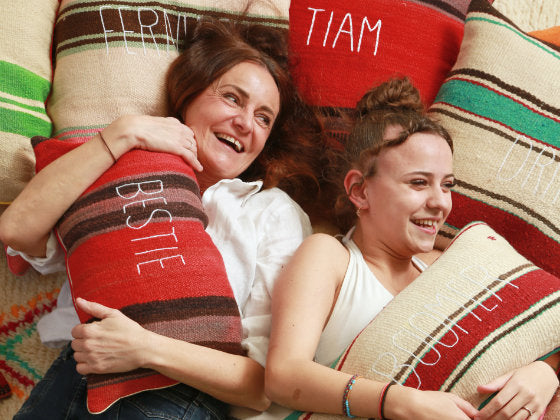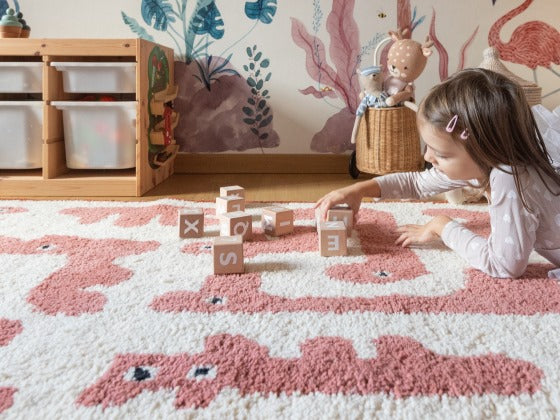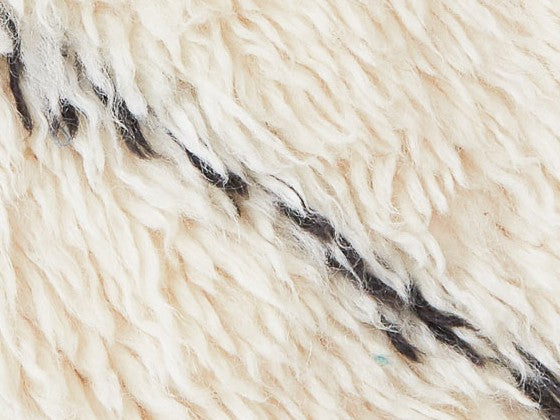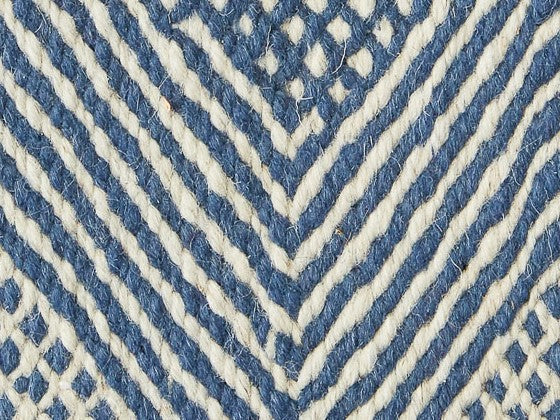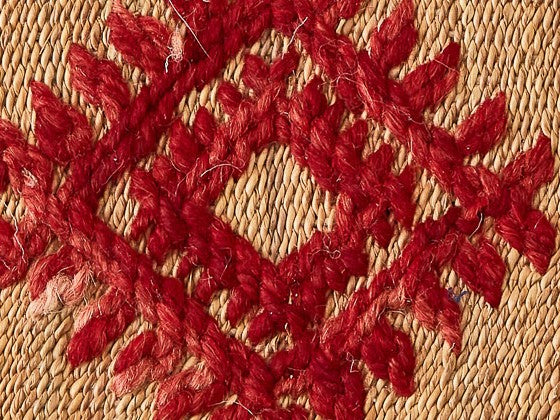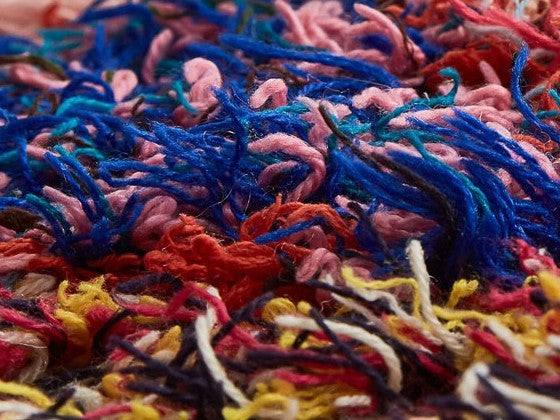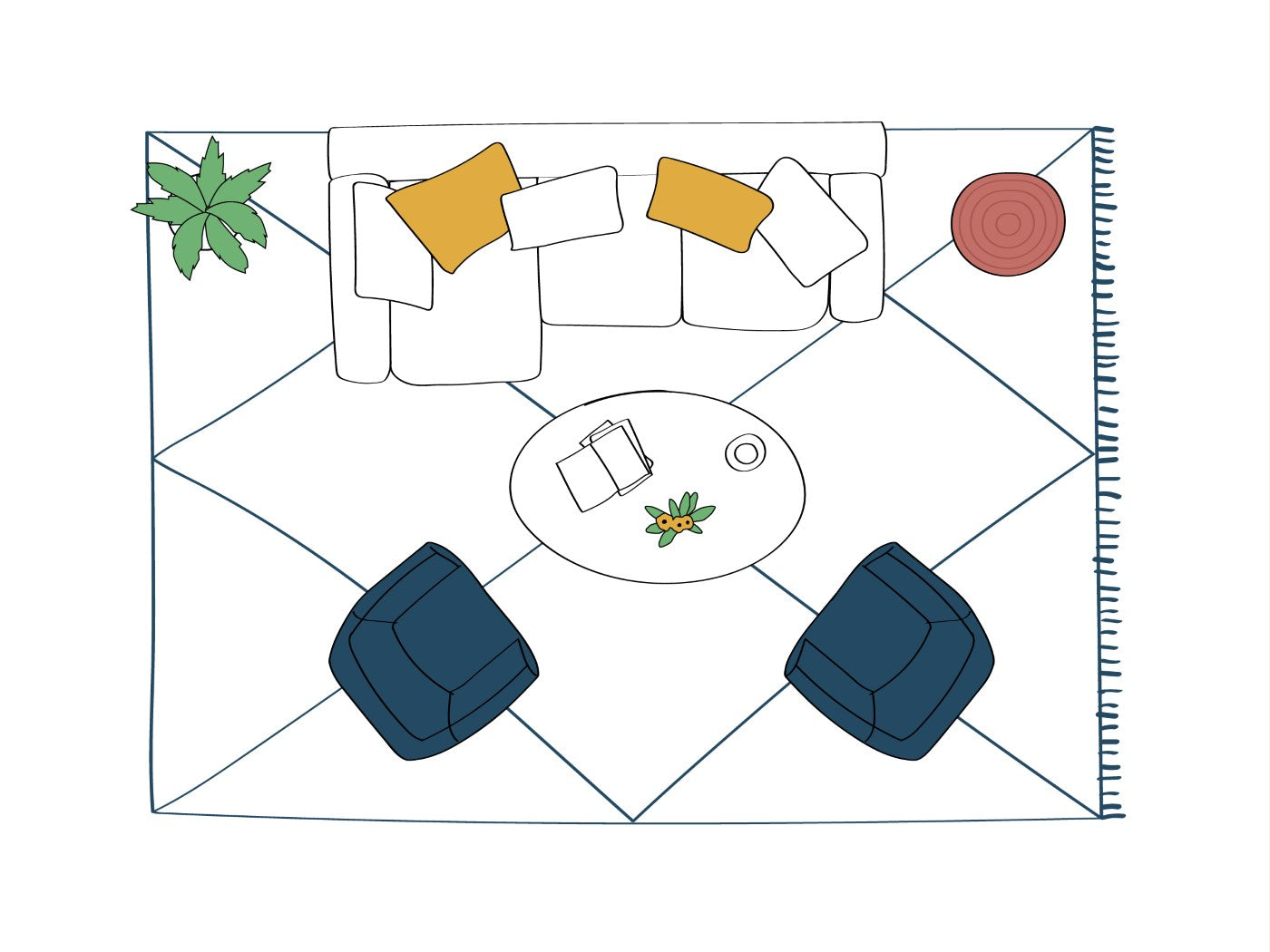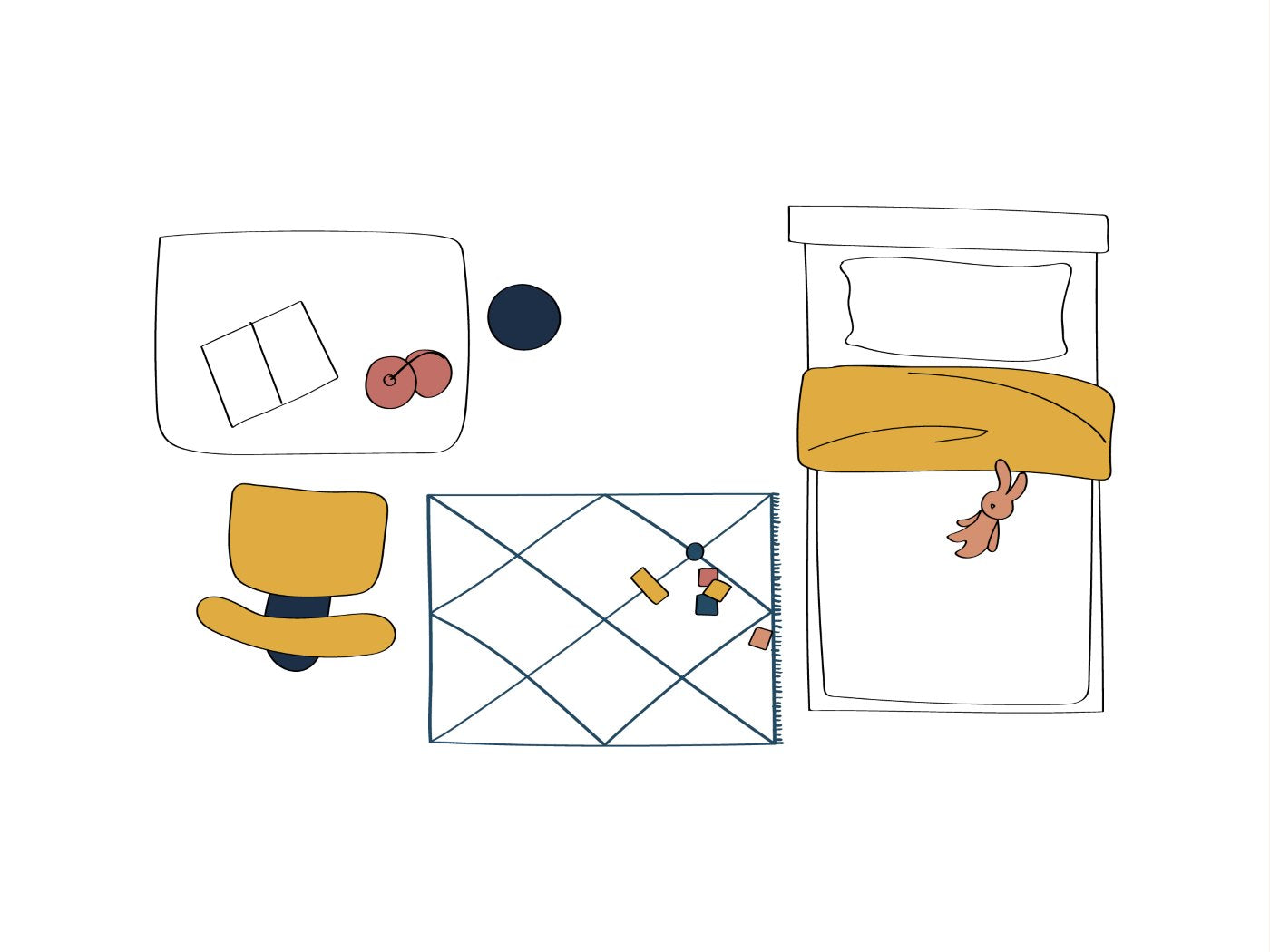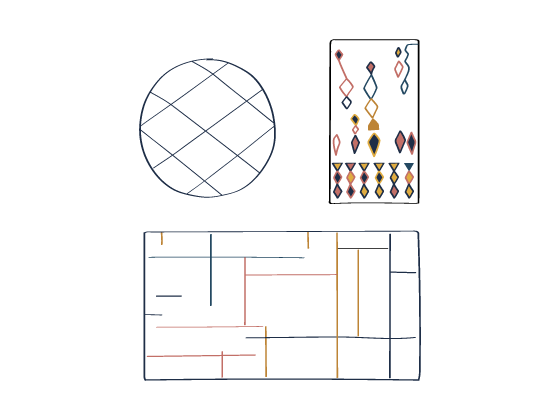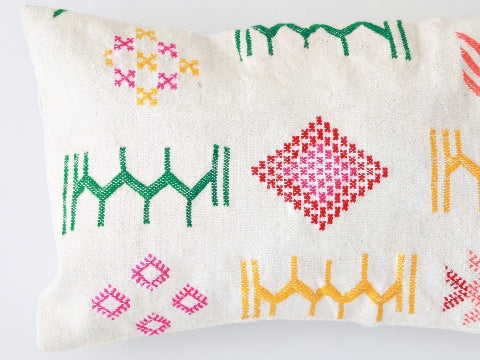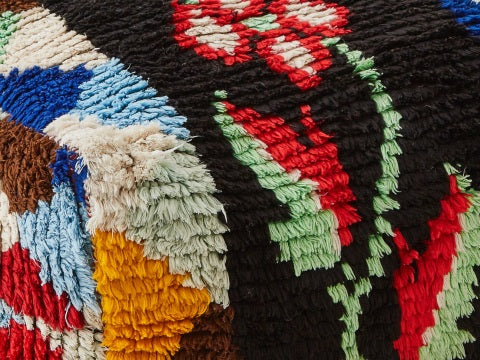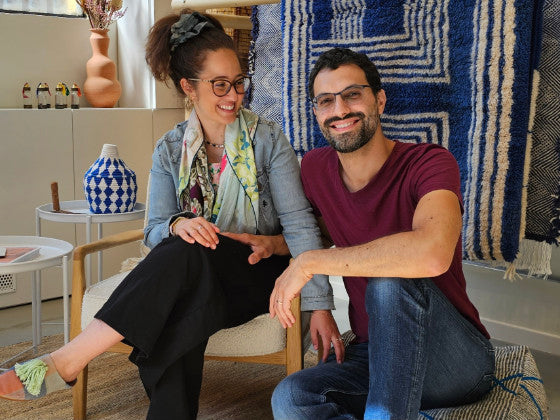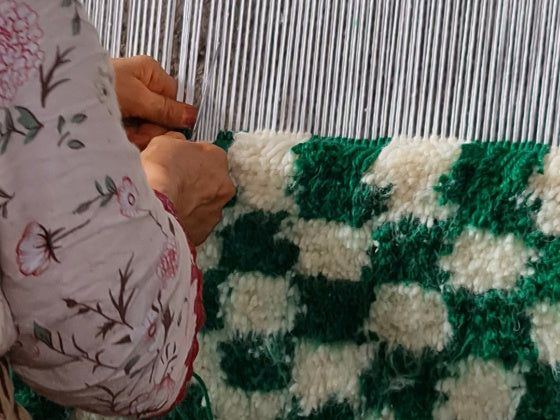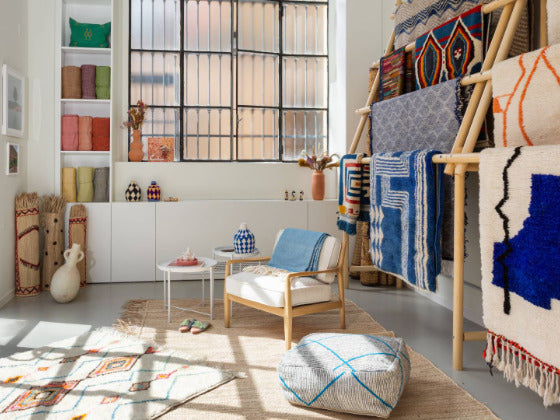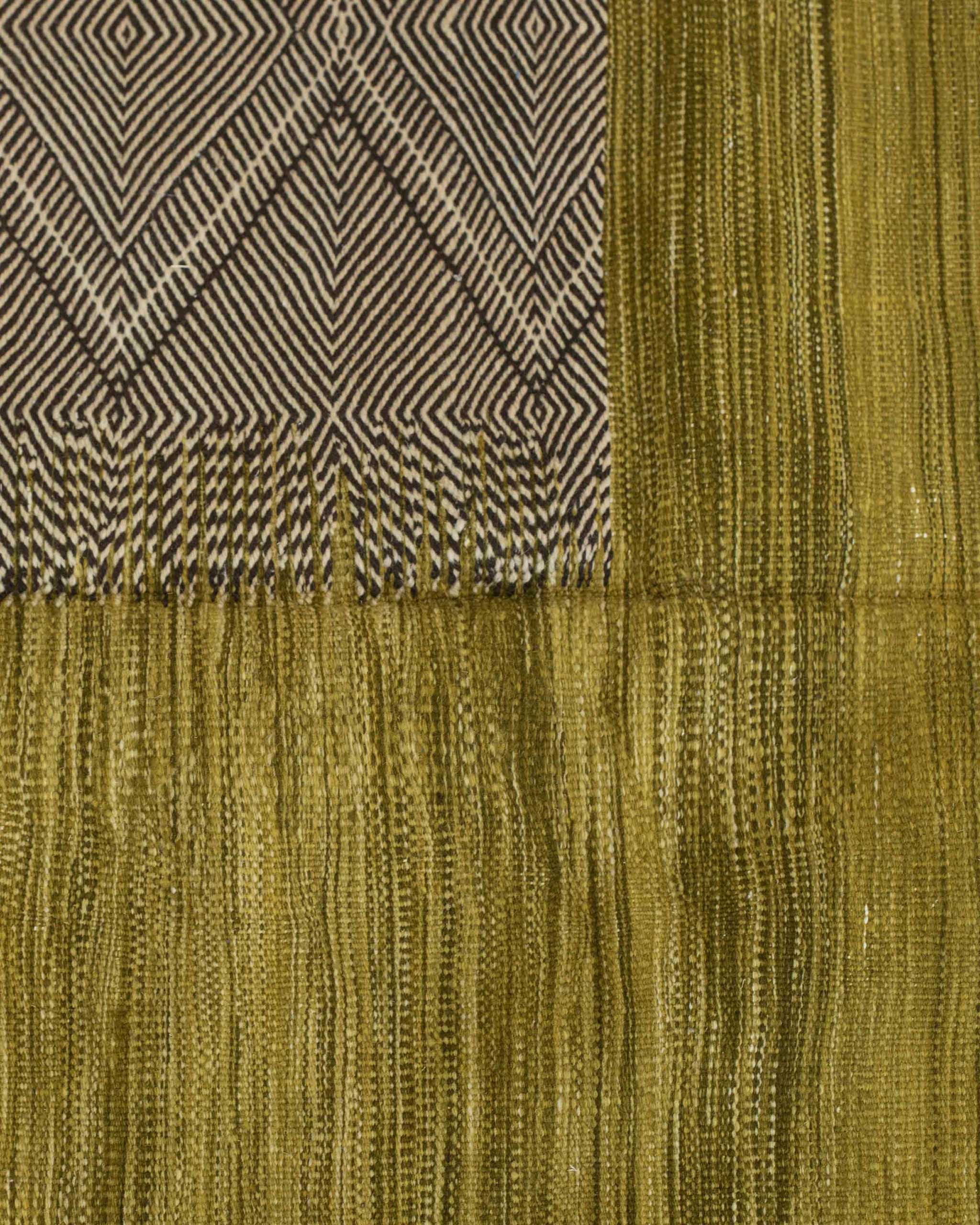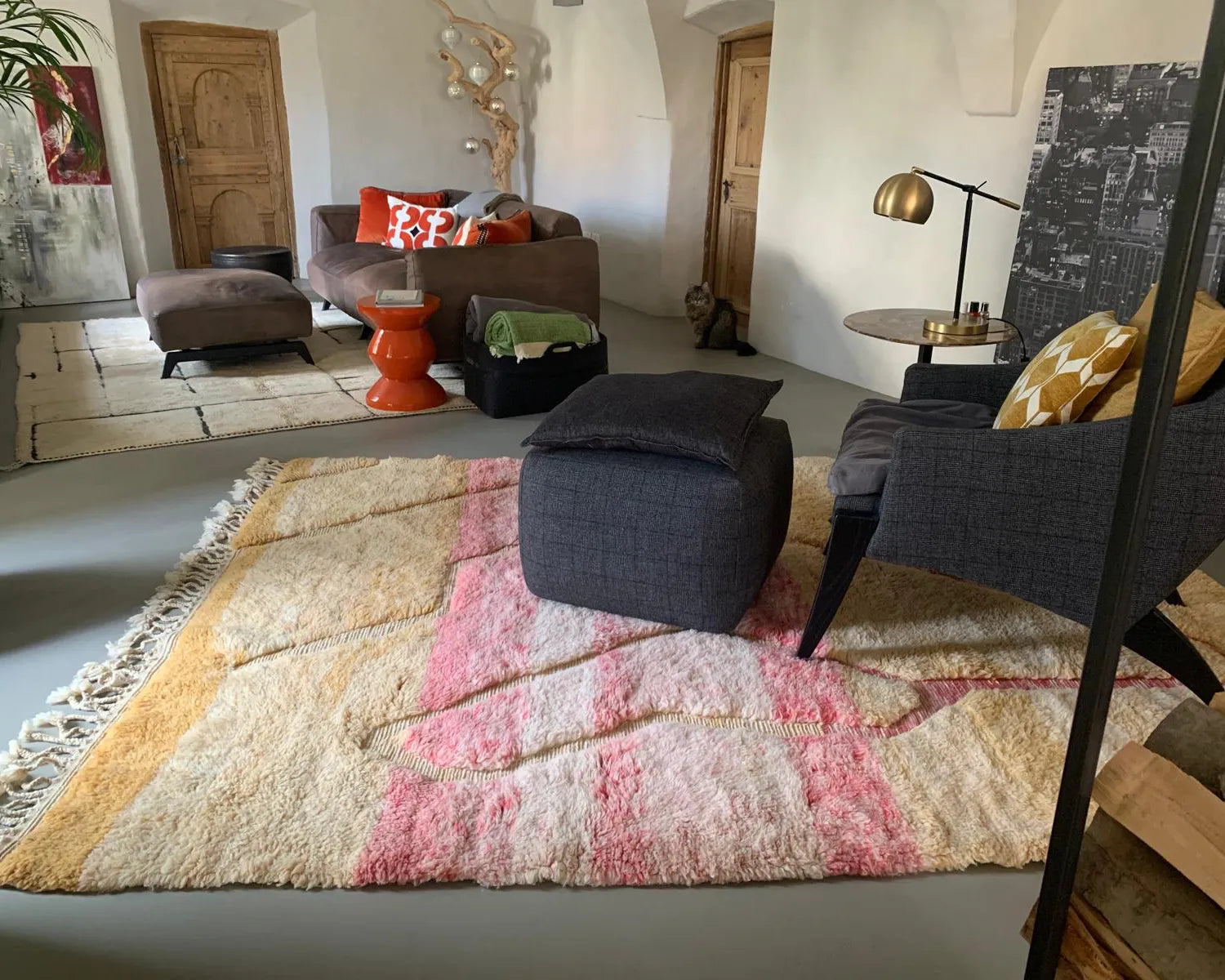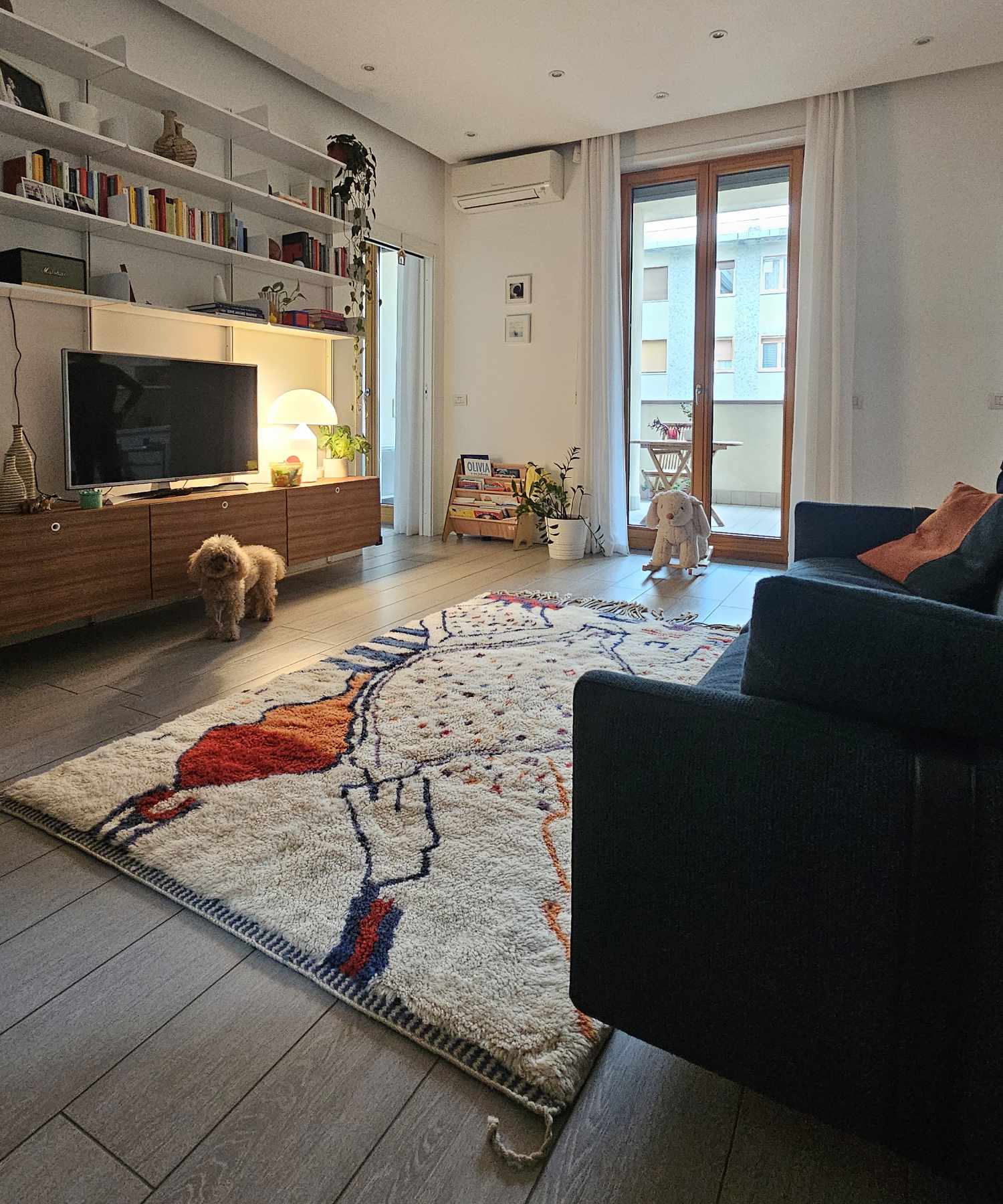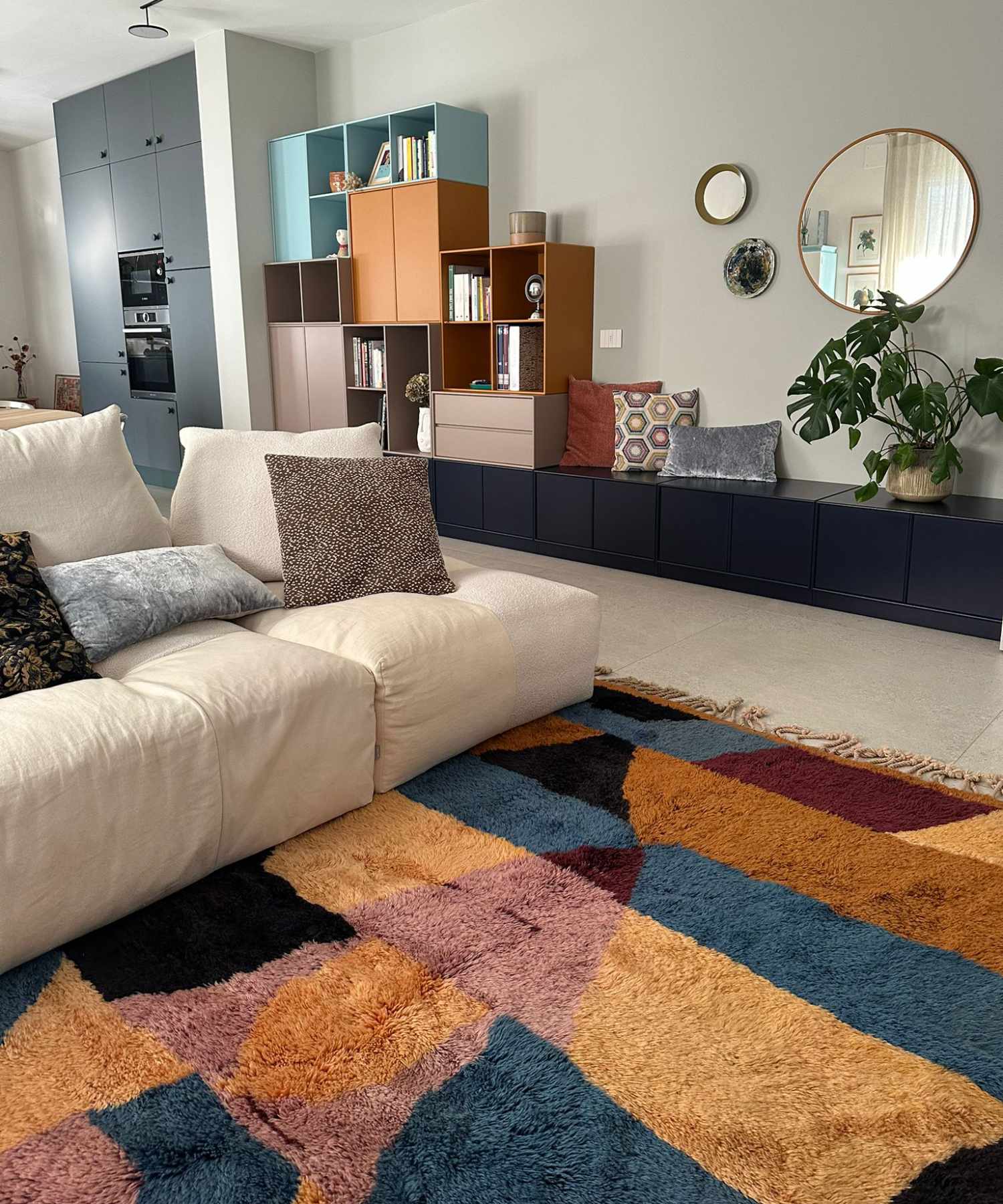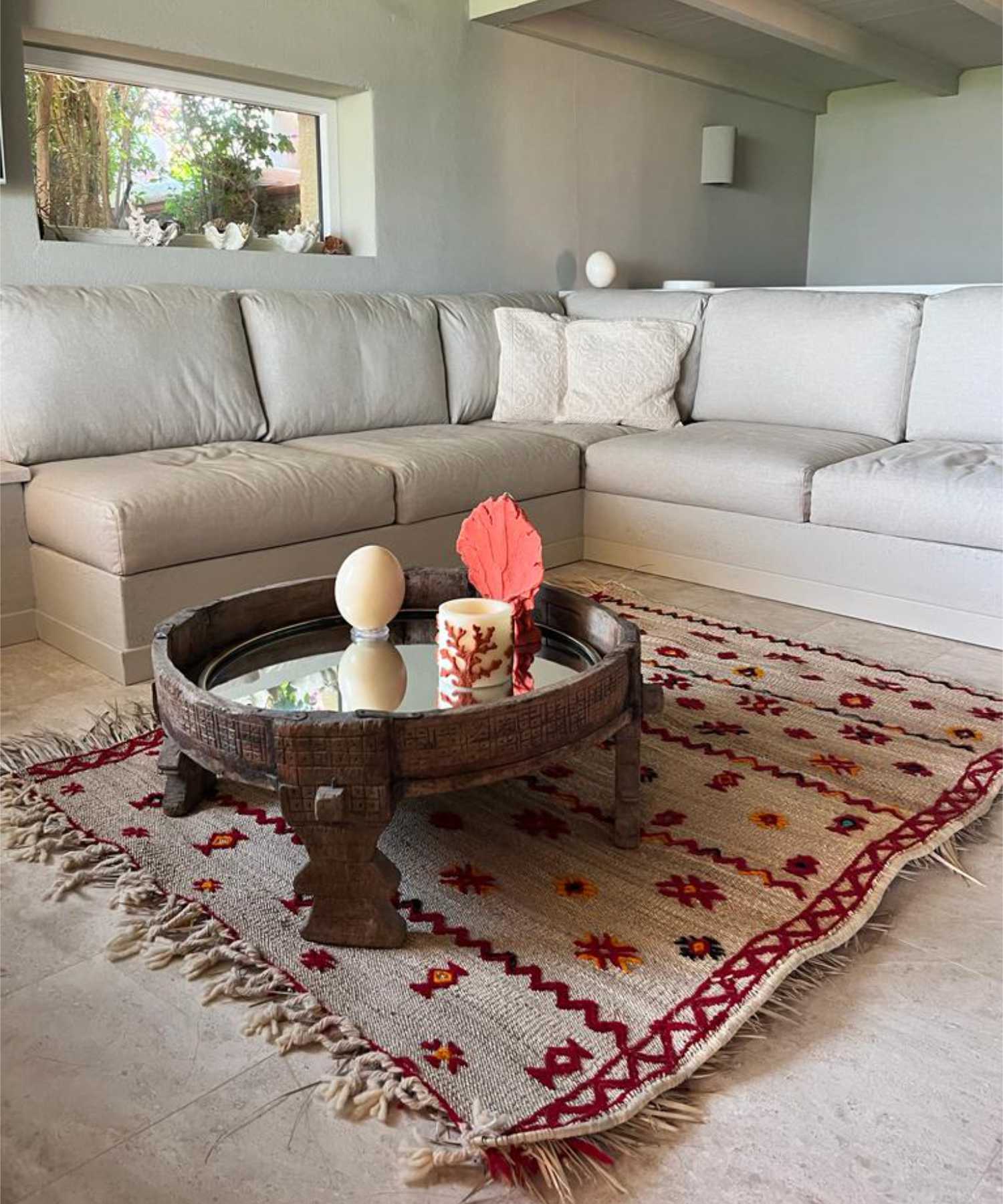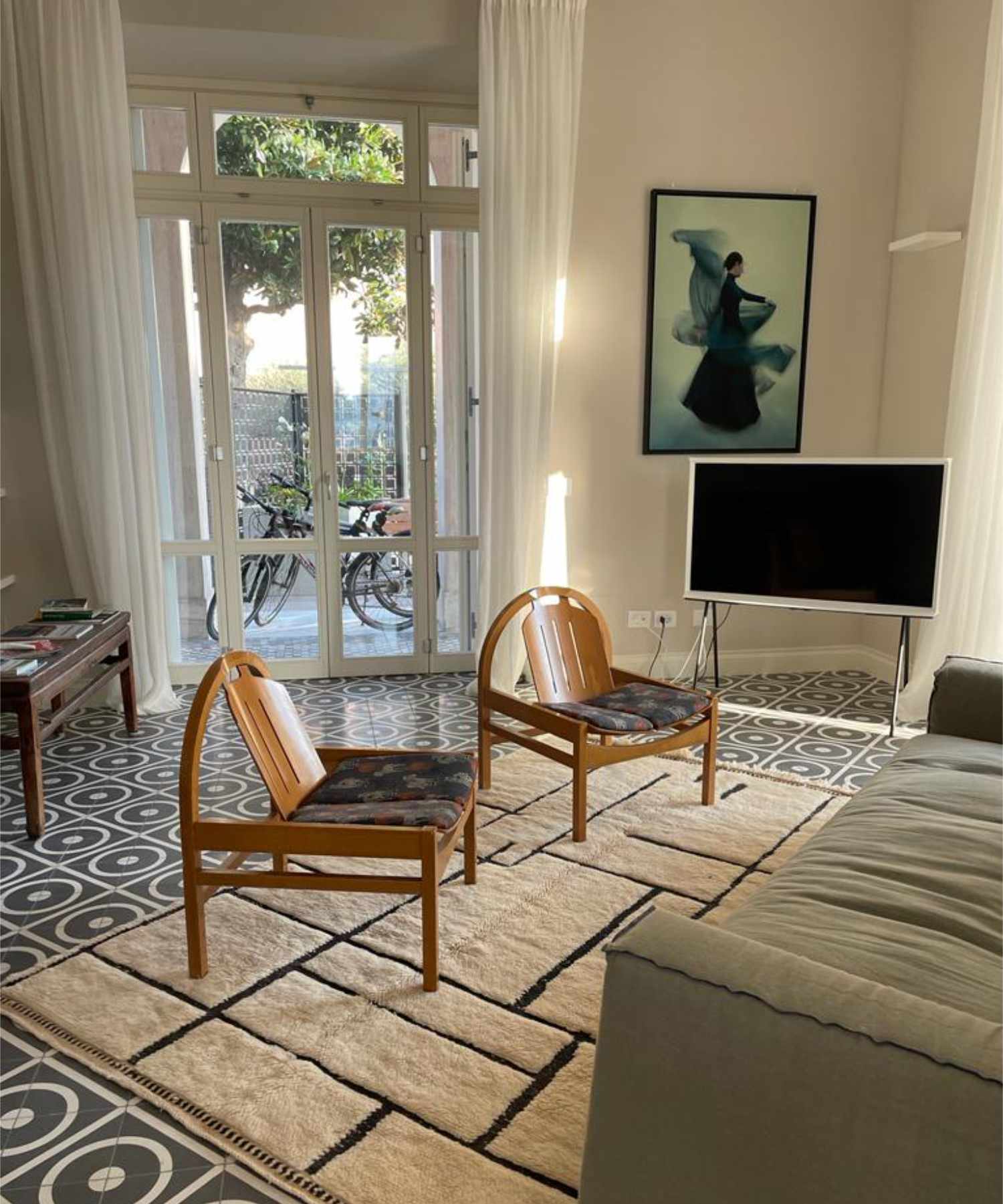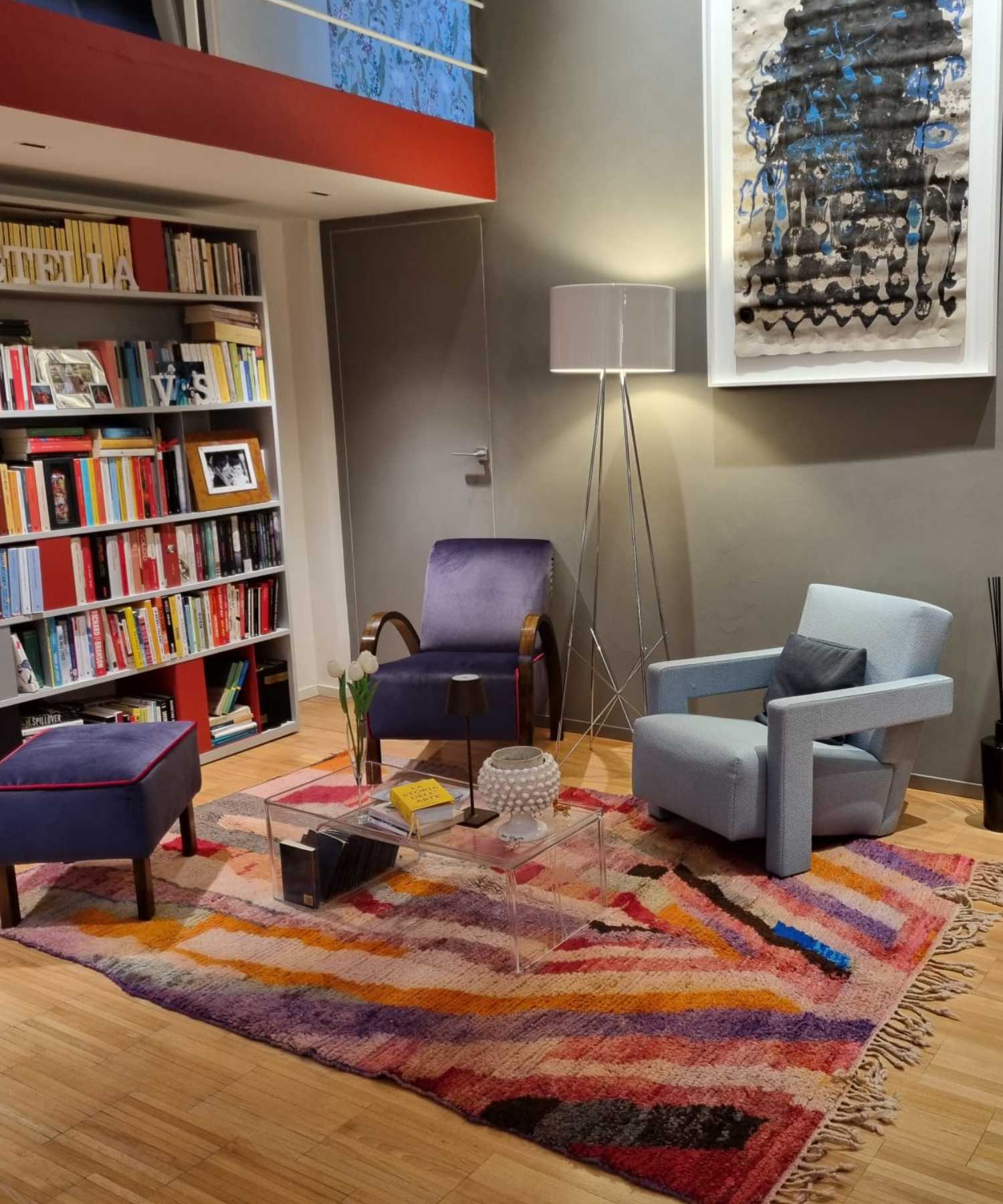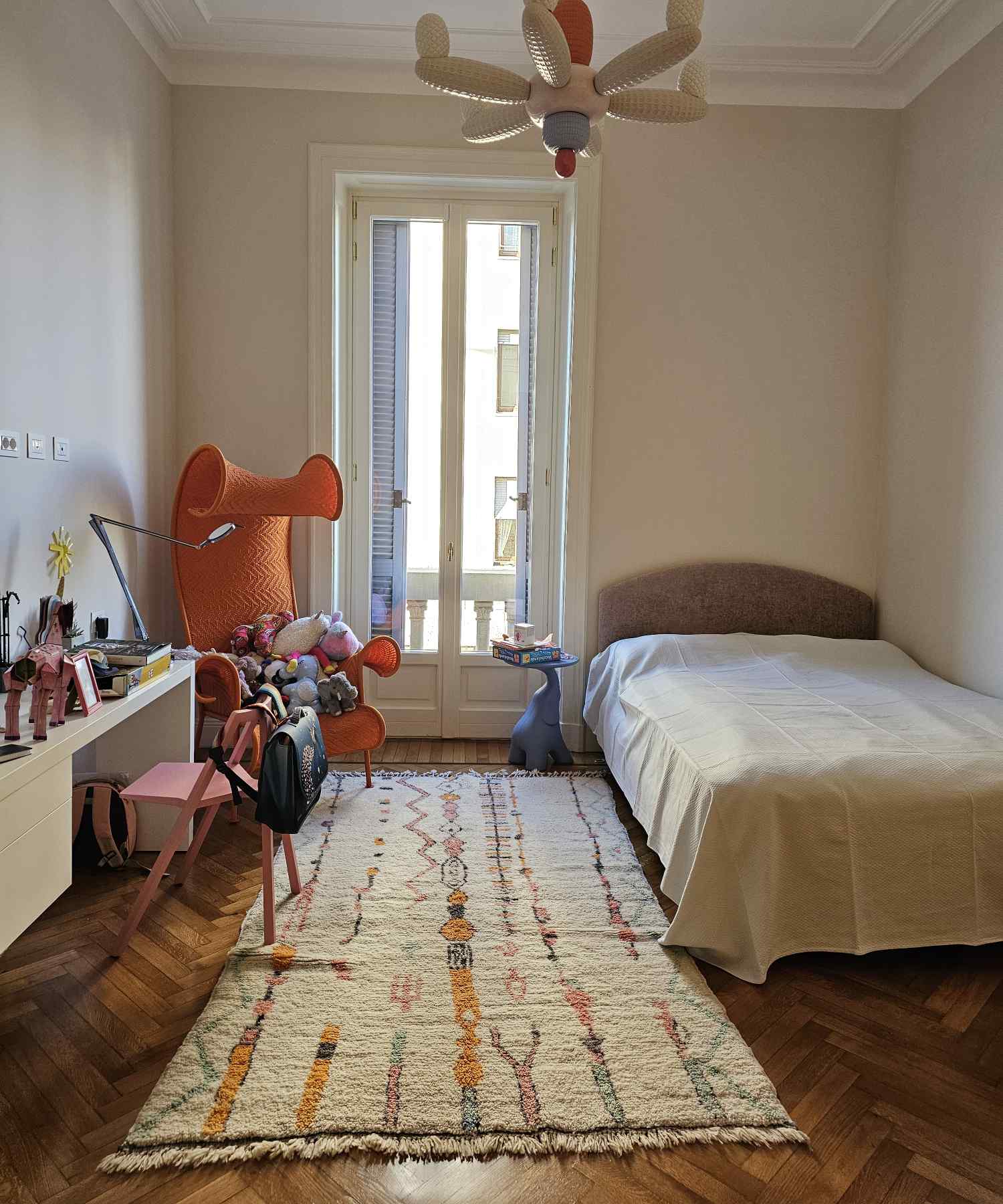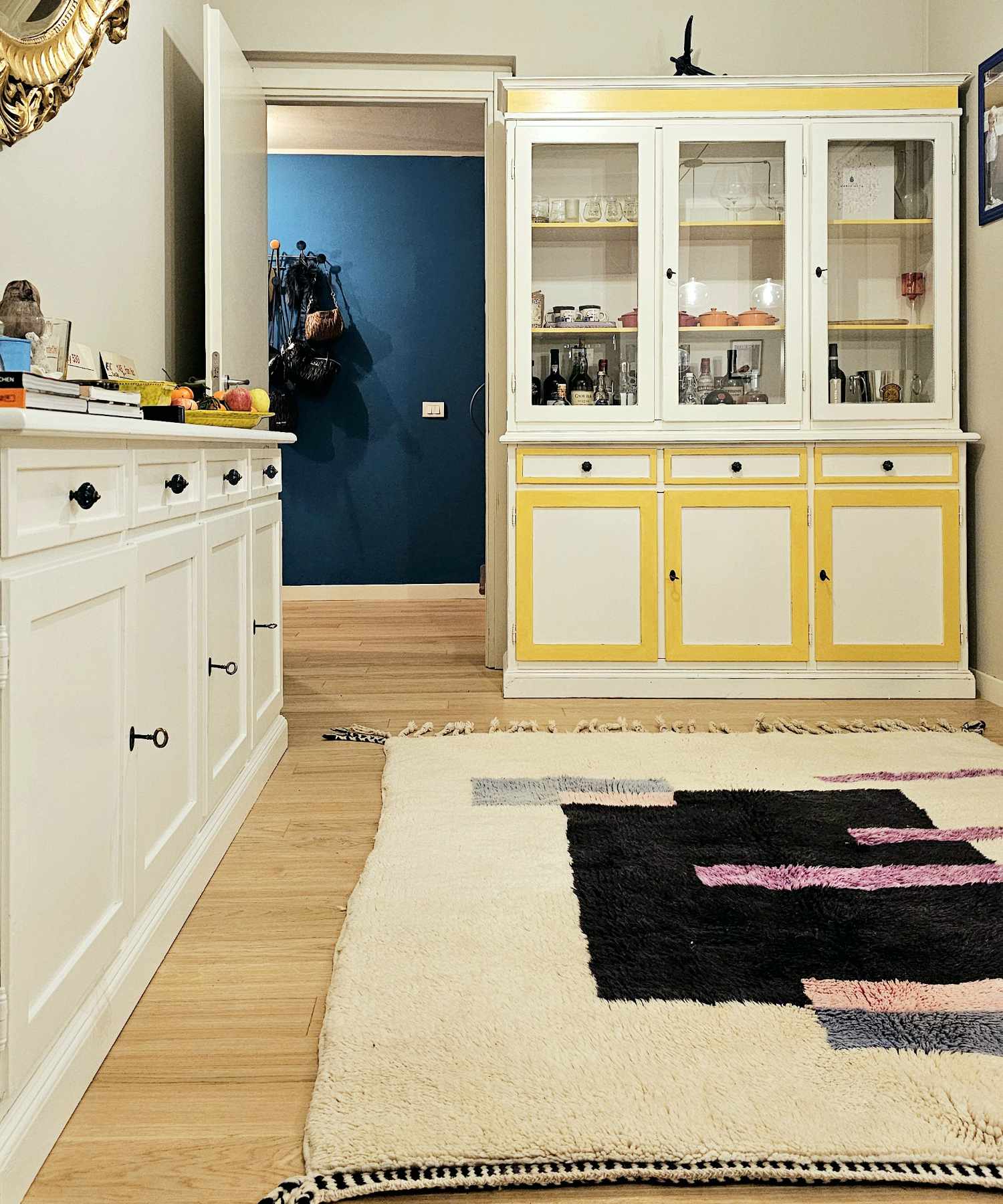How it is made
This contemporary Zanafi is a kilim pile-free rug, made entirely from densely hand-woven wool, following the tradition of the Taznakht region in the High Atlas. The predominant colour is a melange olive green, with subtle shifts that move from yellow to almost acid green. This background is enriched by black and white graphic elements: two large squares and two bands on the short edges. Inside the squares, a dense pattern of diamonds and zigzag lines creates an almost hypnotic lattice, echoing the Berber "eye" symbol, traditionally used as protection against the evil eye. Compared with a classic kilim, a Zanafi has greater density: it feels compact to the touch, lightweight yet sturdy. Designed to live with every day and age beautifully over time.
Perfect for…
The geometry, colour and optical details make this rug ideal for those who love contemporary interiors but still want authentic, traditional pieces in the mix. In a large living room or lounge it creates a strong - yet discreet - graphic backdrop: the melange green is not the easiest colour to work with, but the black and white squares add an almost architectural note that makes pairing easier. In the dining room it works beautifully with generous solid-wood tables and clean-lined chairs. In the bedroom it introduces colour in a sophisticated, understated way. Thanks to its discreet but characterful presence, it works just as well in the city as by the sea, in the countryside or in the mountains, and sits comfortably in both minimalist spaces and more exuberant, eclectic schemes.
It clearly declares its artisanal nature, while feeling thoroughly contemporary.
The detail not to be missed
The short fringes, concentrated only along the black and white sections, are the most contemporary feature of this Zanafi. They don’t follow the tradition of fringes on both short sides, but appear only where the design shifts, creating a deliberately asymmetrical effect. It’s as if the rug “spills over the edges”: an unexpected detail that speaks to the artisan’s creative freedom and the absence of any standardised production.

